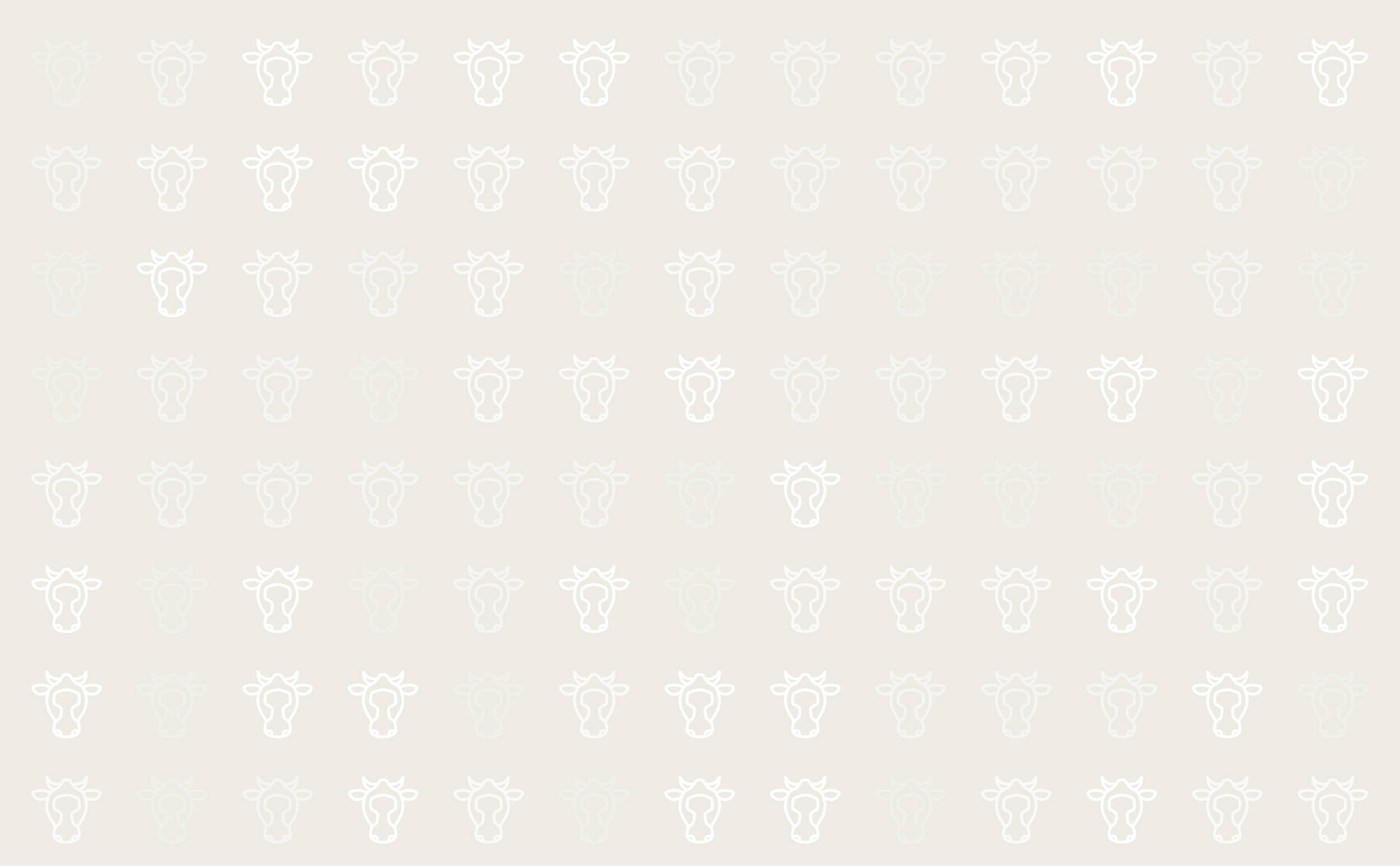



Colour Patterns in Crossbred Beef
By John Evans Associate Professor Animal Breeding, Oklamhoma Cooperative Extension Service. Most breeds of beef cattle have a fixed color pattern that is characteristic for that breed because of previous selection. For example, all Hereford cattle have a red body color with a white face, all Charolais are white, and Red Poll are red. However, some other breeds may have more than one basic body color such as red or black Angus, and white, red, or roan Shorthorn. Still other breeds have multiple colors, which are unpredictable; for example, spotting, brindling, or solid colors in Longhorn.
Most breeds of beef cattle have a fixed color pattern that is characteristic for that breed because of previous selection. For example, all Hereford cattle have a red body color with a white face, all Charolais are white, and Red Poll are red. However, some other breeds may have more than one basic body color such as red or black Angus, and white, red, or roan Shorthorn. Still other breeds have multiple colors, which are unpredictable; for example, spotting, brindling, or solid colors in Longhorn.A knowledge of the genetic aspects of hair color, and experience, allows one to predict with some degree of accuracy the color pattern to expect among calves when crossing breeds. This fact sheet is to serve only as a guide. The predictions listed here give only the major expected colors. Because of gene segregation there will be some exceptions.
Several of the available cattle breeds are categorized as to basic body color classification in Table 1. These breeds are identified with the color pattern that is most common in each breed. For example, some Simmental cattle have color markings similar to that of Herefords; however, the majority have extra white that is non-predictable as to pattern. Thus, Simmental are categorized as spotted cattle.
| Table 1. Basic body colors of cattle and the breeds identified with those colors | |||||
|
Black
|
Red
|
White or Cream
|
Light hair
color with dark pigment skin |
Spotted
|
Mixed colors
|
|
Angus
Brangus Ankina Galloway Welsh Black |
Barzona
Devon Gelbvieh Hereford Polled Hereford Limousin Lincoln Red Norwegian Red Red Angus Red Poll
Salers Santa Gertudis Scotch- Highland Shorthorn South Devon |
Shorthorn
Charolais White Park Blonde'd Aquitaine |
Braham
Brown Swiss Chiania Marchigiana Murray Grey Romagola Jersey Tarentaise |
Beef Friesian
Hays Converter Holstein Maine Anjou Normande MRI Pinzqauer Simmental |
Beefmaster
Braford Longhorn |
Table 2 illustrates the color pattern expected in progeny resulting from the matings of bulls and cows of various colors. Certainly one of the strongest arguments for cross breeding is the use of the crossbred cow. It has been illustrated many times that the average crossbred cow is more productive than the average straight bred cow (see OSU Fact Sheets F-3152 and F-3153). However, as we increase the number of breeds involved in crosses, we decrease our ability to maintain complete color control in the offspring. Table 3 illustrates the expected color pattern in offspring from three-way crossbreds utilizing the F1 cow and straight bred bulls.
| Table 2. Expected color patterns when crossing breeds of various colors | ||||||
| Black | Red | White | Light hair with dark skin | Spotted | Mixed colors | |
|
Black
|
Black | Black | Black-smokey | Black- some brindling |
Black- few spots | Mostly black |
|
Red
|
Red | Red-roan | Red- some brindling |
Red- or black some spots |
Some red- mostly mixed |
|
|
White
|
White | White-grey | Most spotted- some white |
Mixed | ||
|
Light hair with dark skin
|
Grey | Grey- some spotted |
Mixed | |||
|
Spotted
|
Spotted | Mixed | ||||
|
No fixed color
|
Mixed | |||||
| Table 3. Expected offspring color patterns (from a three-way cross using the F1 cow) | |||||
| Black | Red | White | Spot | Mixed | |
|
Black x Black
'' x Red '' x White '' x Spot '' x Mixed |
Black
Black Black Black Black |
Black
Black & Red Black & Red Black&Red&Spots Black & mixed |
Mostly black
Black & red Black- smokey Black-mixed Black-mixed |
Mostly black
Variable Black-mixed Black & spots Mixed |
Mostly black
Mixed Mixed Mixed Mixed |
|
Red x White
'' x White '' x Spot '' x Mixed |
Black
Mostly black Mostly black |
Mostly red
Mostly red Mostly red |
Mixed
Mixed Mixed |
Mixed
Mostly spots Mixed |
Mixed
Mixed Mixed |
|
White x White
'' x Spot '' x White |
Diluted black
Mostly black Mostly black |
Red-roan
Red spot Mixed |
White
White-Spot Mixed |
Spots-White
Spots-mixed Mixed |
Mixed
Mixed Mixed |
|
Spot x Spot
'' x Mixed |
Spots-mostly black
Spots-mostly black |
Red-spot
Spot-mixed |
Spot
Spot |
Spot
Spot |
Mixed
Mixed |
|
Mixed x Mixed
|
Brindling-
mostly black |
Mixed
|
Mixed
|
Mixed
|
Mixed
|
On central markets, cattle are frequently sold with little, if any, information made available about breed or performance. Most buyers will estimate performance (gain, yield, liveability, etc.) in relation to the reputation of the breed; thus, they look for signs that indicate a certain breed or breeds making up crossbred cattle. Some breeds are prone to produce calves that have certain distinguished color markings, such as whiteface, droopy ears, brindling, skunk-backs, and white stocking legs. Table 4 lists certain breeds that when crossed with other breeds frequently produce calves with distinct characteristics.
| Table 4. Breeds which commonly leave specific color markings suggesting their presence in crossbred calves | |||||
| White-face | Brindling | Skunk-backs | Stocking legs | Droopy ear and navel | |
|
Hereford
Polled Hereford Simmental |
Jersey
Brown Swiss Brahman Chiania Tarentaise Longhorn |
Charolais
Pinzqauer |
Holstein
Beef Friesian Maine Anjou Simmental Hays Converter Hereford Polled Hereford |
Brahman
Brangus Santa Gertrudis Braford |
|
Not all calves carrying this breed make-up will possess these characteristics, but many will have them.
Because of gene segregation, there are nearly always exceptions to the rule. Table 5 gives some generalizations to consider when attempting to set up a breeding program within which color is important. Producers who are unconcerned with color, should select superior breeding stock from breeds which excel in economically important traits and blend those breeds together into a breeding program to allow maximum profit.
The opportunity to combine desirable characteristics of two or more breeds (breed complementarity) and increase performance due to hybrid vigor (heterosis) makes crossbreeding a very important mating system for commercial cow herds. Experimental evidence strongly indicates total pounds of calf produced per cow in the breeding herd can be in creased 15 to 25 percent in well defined and executed crossbreeding schemes. It would appear likely that with this potential for increased production, the use of crossbreeding systems by commercial cattle producers would be increasing at a rapid rate; but, this is not the case. The use of crossbreeding systems is increasing, but it has come about very slowly and with considerable resistance.
Why has there been resistance to crossbreeding beef cattle? There is not an easy answer to this question since many factors are involved when a beef producer plans his breeding program. Some commonly expressed negative view points on cross breeding are:
(1) market discrimination against certain breeds and/or colors
(2) lack of uniformity because of color patterns
(3) breeding programs become more complicated because of necessity to mate a certain bull breed (or breed-cross) to a certain breed-cross cow
(4) the need for several breeds of bulls
(5) a greater requirement for cow identification.
The purpose of this fact sheet is to provide some guidance on setting-up crossbreeding systems that should, in addition to capitalizing on breed complementarity and hybrid vigor, maintain a uniform color pattern for ease of selling the offspring. Color is a highly heritable trait, so it can be selected for (or against). In some breeds and breed crosses, the color is highly predictable; however, in some other breeds and breed crosses, color is highly unpredictable. For those producers who market cattle in groups, color can be an economically important trait.
Table 5. Generalizations to remember if trying to create a certain color pattern.
Things to do:
1. Want to create a black baldy?
a) Infusion of Hereford (H or P) will put white or brockle face on essentially any color of cow.
b) Infusion of Simmental will put striped or blazed face on solid colored cows but white face on white faced cows (i.e. Hereford or baldy cows)
c) Black is dominant to red color in cattle. Thus the first cross between black and red will produce essentially all black (depends upon frequency of black cows or bulls that are red carriers) calves. If the second cross is to a red bull the color of calves will be 1/2 black:1/2 red, but by using a black bull the calves will again be essentially all black.
d) Breed examples:
| Angus | Hereford | |||
| Brangus | x | (H or P) | = | Black Baldy Calf |
| Galloway | Simmental |
a) If red is desired, producer must use only red breeds.
b) If black is desired producer must use only black breeds.
c) A mixture of red and black breeds will produce black offspring the first cross but a mixture of red and black (close to 50-50) in second and third crosses.
3. Color not important?
a) Use any breed, just concentrate on blending breeds for production traits such as milk production, fertility, growth, etc.
June 2004


